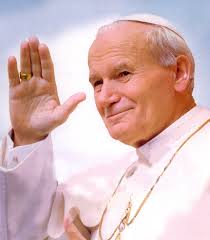
Long before he became Pope John Paul II on October 16, 1978, Karol Józef Wojtyła was born on May 18, 1920, in the small town of Wadowice, Poland, which is 50 kilometers from Krakow. He was the youngest of three children born to Karol Wojtyła and Emilia Kaczorowska. His father, was a non-commissioned army officer and his mother was a school teacher.
 When Karol was conceived, Emilia was warned by her doctor that her life was at risk, due to her severe heart-condition. He not only thought that she had no chance of giving birth to a live child but recommended an abortion to save her life. But Emilia would have none of it and trusted in God. Nevertheless, Karol was born healthy and was baptized in the parish church of Wadowice, on June 20, 1920, by Fr. Franciszek Zak. In 1929, when he was 8, he received his First Holy Communion. Tragically, later that year, his mother died with the next pregnancy.
When Karol was conceived, Emilia was warned by her doctor that her life was at risk, due to her severe heart-condition. He not only thought that she had no chance of giving birth to a live child but recommended an abortion to save her life. But Emilia would have none of it and trusted in God. Nevertheless, Karol was born healthy and was baptized in the parish church of Wadowice, on June 20, 1920, by Fr. Franciszek Zak. In 1929, when he was 8, he received his First Holy Communion. Tragically, later that year, his mother died with the next pregnancy.
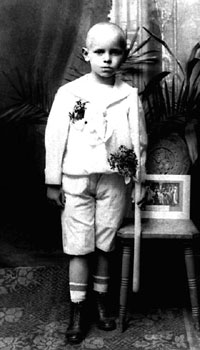
His father was a devout man and had great influence in Karol’s life. Soon after his mother died, his father took him to the St. Florian Retreat Centre, brought Karol to the chapel, then before the Marian Shrine of the Black Madonna, he told Karol: “She is your mother now”. His closeness to Our Lady grew from there, eventually becoming his Papal motto: “Totus Tuus”, which means “All Yours!” which is similar to our Lady’s “Fiat!”, “Let what you have said be done to me!”
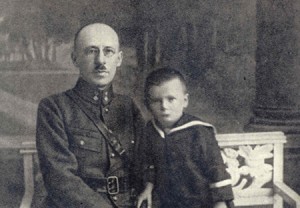 Throughout his life, Karol was healthy and athletic and loved many different sports, but particularly loved being the goalie,when playing soccer. There were many Jewish students among his classmates whom he considered friends. To balance the team, he frequently played as goalie on the Jewish sports team. For a short time, he even had a Jewish girlfriend.
Throughout his life, Karol was healthy and athletic and loved many different sports, but particularly loved being the goalie,when playing soccer. There were many Jewish students among his classmates whom he considered friends. To balance the team, he frequently played as goalie on the Jewish sports team. For a short time, he even had a Jewish girlfriend.
Despite their age difference, Karol looked up to his brother Edmund, nicknamed Mundek, and was very close to him. After Edmund graduated from the Jagiellonian University in Krakow, he became a doctor in Wadowice. Unfortunately, during a scarlet fever epidemic in the winter of 1932, he got sick from a patient and died four days later on December 4, aged 26, when Karol was only 12. Karol was profoundly affected. A few years later, in 1938, he was confirmed at 18, while in Marcin Wadowita high school. Upon graduation, he enrolled in the drama school at the Jagiellonian University in Krakow. A year later, in 1939, the Nazi occupation forces closed the university. To earn his living and to avoid being deported to Germany, he did manual work in a limestone quarry (1940-1944) and then in the Solvay chemical factory. In 1941, his father died of a heart attack. At only 21, Karol was left with no other immediate relatives alive.
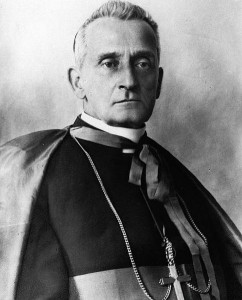
This caused a deep spiritual hunger. Through a devout tailor, he became so interested in the poetry of St. John of the Cross, Spain’s 16th Century Carmelite mystic, that he learned Spanish to understand the original writings. Within a year, in October 1942, feeling called to the priesthood, he knocked on the door of the Bishop’s Palace in Krakow, asking to study for the priesthood. Soon after, he began courses in the clandestine underground seminary run by Cardinal Adam Stefan Sapiehahe, the Archbishop of Krakow. At the same time, Karol was one of the pioneers of the underground “Rhapsodic Theatre” which he considered an essential part of preserving Polish culture, against Nazi persecution. While just a seminarian, he also moved through the occupied cities, daily risking his life by taking various Jewish families from the ghettos, finding them new identities and hiding places, thus saving many from execution. He saved a two-year-old Jewish boy, whose parents had been sent to Auschwitz, by giving him to a Catholic Polish family. After the war, when they asked the young Fr. Wojtyla to baptize the boy, he refused, stating that the child needed to be raised in the Jewish faith of his birth parents and nation, not as a Catholic. Instead, Fr. Karol Wojtyla arranged for this Jewish boy to leave Poland, to be raised by his Jewish relatives in the United States. In April 2005, after his death, the B’nai Brith gave Pope John Paul II the “Righteous among the Nations” medal for his numerous acts of saving the Jewish people from the Nazis during the war. On February 29. 1944, after returning from work at the quarry, Wojtyła was hit by a German truck. He was unconscious the whole night until a passing woman found him and had him rushed to hospital. He spent two weeks in hospital from a fractured skull and shoulder injury. For him, the survival from this accident was a confirmation of his vocation. On August 6 1944, a day known as ‘Black Sunday’, the Gestapo rounded up young men in Krakow to curtail the uprising. Wojtyła escaped by hiding in the basement of his uncle’s house at 10 Tyniecka Street, while the German troops searched above. More than eight thousand men and boys were taken that day, while Wojtyła escaped to the Archbishop’s Palace, where he remained until after the Germans had left. After the Second World War, he continued his studies in the major seminary of Krakow, once it had re-opened, and in the faculty of theology of the Jagiellonian University. His facility for languages blossomed during this time, gaining a proficiency in 12 languages, 9 of which he used frequently as Pope. On All Saint’s Day, Nov. 1, 1946, he was ordained to the priesthood by Cardinal Sapieha in Krakow. Shortly afterw ards, Cardinal Sapieha sent him to the Angelicum, in Rome, where he worked under the guidance of the French Dominican, Garrigou-Lagrange. He finished his doctorate in theology in 1948 with a thesis on the subject of “Faith in the works of St. John of the Cross” (Doctrina de fide apud Sanctum Ioannem a Cruce). At the same time, during his vacations, he exercised his pastoral ministry among the Polish immigrants of France, Belgium and Holland. According to Wojtyła’s classmate, the future Austrian Cardinal Alfons Stickler, as a young priest, Fr. Karol Wojtyla was also sent to San Giovanni Rotundo as Inquisitor of Padre Pio. He verified both the stigmata and the holiness of Padre Pio. When he went to confession to Padre Pio, he was told that one day he would ascend to “the highest post in the Church. His future assassination attempt was also foretold; Padre Pio said: “You will see your white cassock stained with blood”. Although Wojtyla held Padre Pio in high esteem, he did not immediately believe what had been prophesied. Cardinal Stickler added that Wojtyła became more convinced when he became Cardinal of Krakow. Wojtyła returned to Poland in the summer of 1948 for his first pastoral assignment in the village of Niegowić, fifteen miles (24 km) from Kraków, at the Church of the Assumption. He arrived at Niegowić at harvest time, where his first action was to kneel and kiss the ground. This gesture, which he adapted from the French priest St. Jean Marie Vianney, would become a ‘trademark’ action during his papacy. In 1948 he returned to Poland and was vicar of various parishes in Krakow as well as chaplain to university students. This period lasted until 1951 when he again took up his studies in philosophy and theology. In 1953 he defended a thesis on “evaluation of the possibility of founding a Catholic ethic on the ethical system of Max Scheler” at Lublin Catholic University. In Stalinist-era Poland, it was not permitted for priests to travel with groups of students.
ards, Cardinal Sapieha sent him to the Angelicum, in Rome, where he worked under the guidance of the French Dominican, Garrigou-Lagrange. He finished his doctorate in theology in 1948 with a thesis on the subject of “Faith in the works of St. John of the Cross” (Doctrina de fide apud Sanctum Ioannem a Cruce). At the same time, during his vacations, he exercised his pastoral ministry among the Polish immigrants of France, Belgium and Holland. According to Wojtyła’s classmate, the future Austrian Cardinal Alfons Stickler, as a young priest, Fr. Karol Wojtyla was also sent to San Giovanni Rotundo as Inquisitor of Padre Pio. He verified both the stigmata and the holiness of Padre Pio. When he went to confession to Padre Pio, he was told that one day he would ascend to “the highest post in the Church. His future assassination attempt was also foretold; Padre Pio said: “You will see your white cassock stained with blood”. Although Wojtyla held Padre Pio in high esteem, he did not immediately believe what had been prophesied. Cardinal Stickler added that Wojtyła became more convinced when he became Cardinal of Krakow. Wojtyła returned to Poland in the summer of 1948 for his first pastoral assignment in the village of Niegowić, fifteen miles (24 km) from Kraków, at the Church of the Assumption. He arrived at Niegowić at harvest time, where his first action was to kneel and kiss the ground. This gesture, which he adapted from the French priest St. Jean Marie Vianney, would become a ‘trademark’ action during his papacy. In 1948 he returned to Poland and was vicar of various parishes in Krakow as well as chaplain to university students. This period lasted until 1951 when he again took up his studies in philosophy and theology. In 1953 he defended a thesis on “evaluation of the possibility of founding a Catholic ethic on the ethical system of Max Scheler” at Lublin Catholic University. In Stalinist-era Poland, it was not permitted for priests to travel with groups of students.
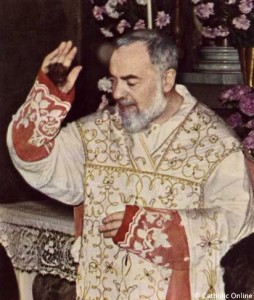
Yet, while Wojtyla served as a priest in Kraków, groups of students regularly joined him for Stigmata Father Piea hiking, skiing, bicycling, camping and kayaking, accompanied by prayer, outdoor Masses and theological discussions. However, to prevent outsiders from deducing he was a priest, Father Wojtyła asked his younger companions to call him “Wujek” (Polish for “Uncle”). The nickname gained popularity among his followers. When he was named auxiliary bishop of Kraków in 1959, these acquaintances were concern that this would change him. But Wojtyła responded to his friends, “Wujek will remain Wujek,” and he continued to live a simple life, shunning the trappings that came with his position as Bishop. This beloved nickname stayed with Wojtyła for his entire life and continued to be affectionately used, particularly by the Polish people. Later he became professor of moral theology and social ethics in the major seminary of Krakow and in the Faculty of Theology of Lublin. On July 4, 1958, he was appointed auxiliary bishop of Krakow, titular bishop of Ombi, by Pope Pius XII, and was consecrated September 28, 1958, in Wavel Cathedral, Krakow, by Archbishop Eugeniusz Baziak.
Having counseled tens of thousands of couples, dealing with virtually every human struggle in the confessional as a priest, he knew that many, even in the Church, did not properly understand the human person, the body, love and sexuality, what it meant to male or female, to be married, single or celibate. In his concern, that they know the sacredness of married life, he wrote: LOVE & RESPONSIBILITY (1960) He wanted to put “love into love”; put Agape into Eros. It is interesting to note that Chapter 5 was considered “obscene” by French publishers. Wojtyla’s courageous, yet orthodox Catholic theology, was noticed by Cardinal Montini, who, later as Pope Paul VI, relied on Cardinal Wojtyla for his theological support. For Wojtyla, “a New Evangelization” was necessary if the Church was to achieve a Culture of Life in society. For him, this meant that it was not enough for the Church to simply forbid sin or condemn someone from doing wrong. The essential mandate of the Church was to re-propose the sacredness of the human person, created “in the image and likeness of God”, to give them God’s call to holiness, and to practically help them to understand and live Catholic sexual morality.
note that Chapter 5 was considered “obscene” by French publishers. Wojtyla’s courageous, yet orthodox Catholic theology, was noticed by Cardinal Montini, who, later as Pope Paul VI, relied on Cardinal Wojtyla for his theological support. For Wojtyla, “a New Evangelization” was necessary if the Church was to achieve a Culture of Life in society. For him, this meant that it was not enough for the Church to simply forbid sin or condemn someone from doing wrong. The essential mandate of the Church was to re-propose the sacredness of the human person, created “in the image and likeness of God”, to give them God’s call to holiness, and to practically help them to understand and live Catholic sexual morality.
Whether as Auxiliary Bishop, or, on January 13, 1964, 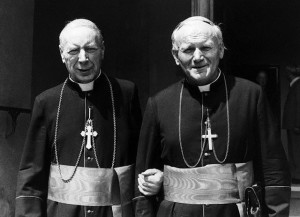 when he was appointed Archbishop of Krakow by Pope Paul VI, Archbishop, Karol Wojtyla fully participated in all Vatican Council II assemblies for the Synod of Bishops (1962-1965), and made significant contributions to drafting the Decree on Religious Freedom (in Latin, “Dignitatis Humanae”) and the Pastoral Constitution on the Church in the Modern World “Gaudium et Spes”. In particular, his Christocentric anthropology is clear in GS #22: “In Christ, man reveals God to man and man to himself.” And GS#24 : “Man can only find himself in the sincere gift of self.” The teaching is clear that Christ came not only to reveal divine truth to us, but, as “God-made-man”, he also came to reveal the truth of our humanity “in the image and likeness of God”. It is only in the mystery of the Incarnate Word that the mystery of our own humanity is understood. Throughout his Pontifical, Pope John Paul II used these words of Gaudium et Spes to affirm his own views on the nature of the human person in relation to God: man is “the only creature on earth that God created for its own sake” and man “can fully discover his true self only in a sincere giving of himself”. Although he was welcomed to the Preparatory Commission on Marriage & the Family in 1966, he was not allowed to leave Krakow by the communists. Without Wojtyla, the resulting “Majority Report” dissented against the Church on major moral issues such as contraception & abortion. He was concerned that this was proof that a majority of theologians, priests and bishops were poorly formed from the seminary, and did not understand “man in the image & likeness of God” as the foundation of ethics. He was concerned that the old arguments for the church’s moral teaching were not adequate for the third millennium, that they were not convincing enough for people living in a world that had substantially changed.
when he was appointed Archbishop of Krakow by Pope Paul VI, Archbishop, Karol Wojtyla fully participated in all Vatican Council II assemblies for the Synod of Bishops (1962-1965), and made significant contributions to drafting the Decree on Religious Freedom (in Latin, “Dignitatis Humanae”) and the Pastoral Constitution on the Church in the Modern World “Gaudium et Spes”. In particular, his Christocentric anthropology is clear in GS #22: “In Christ, man reveals God to man and man to himself.” And GS#24 : “Man can only find himself in the sincere gift of self.” The teaching is clear that Christ came not only to reveal divine truth to us, but, as “God-made-man”, he also came to reveal the truth of our humanity “in the image and likeness of God”. It is only in the mystery of the Incarnate Word that the mystery of our own humanity is understood. Throughout his Pontifical, Pope John Paul II used these words of Gaudium et Spes to affirm his own views on the nature of the human person in relation to God: man is “the only creature on earth that God created for its own sake” and man “can fully discover his true self only in a sincere giving of himself”. Although he was welcomed to the Preparatory Commission on Marriage & the Family in 1966, he was not allowed to leave Krakow by the communists. Without Wojtyla, the resulting “Majority Report” dissented against the Church on major moral issues such as contraception & abortion. He was concerned that this was proof that a majority of theologians, priests and bishops were poorly formed from the seminary, and did not understand “man in the image & likeness of God” as the foundation of ethics. He was concerned that the old arguments for the church’s moral teaching were not adequate for the third millennium, that they were not convincing enough for people living in a world that had substantially changed.
On June 26, 1967, Paul VI announced Archbishop Karol Wojtyła’s promotion to the 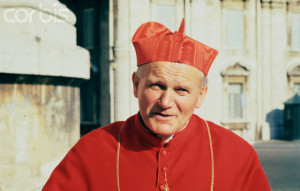 Sacred College of Cardinals. Now as Cardinal of Krakow, he formed the Archdiocesan Institute for Family Studies, to address concerns raised by the “Majority Report”. He gathered local and international experts on marriage & the family. The resulting “Krakow deliberations”‘ main moral argument was based on a “personalist understanding of the human person”, “called to holiness”, through a “moral language, inscribed in the sexual structure of the human body”. He sent the “Krakow deliberations” to Rome in February 1968, in time for the Humanae Vitae Commission. While he fully participated in the Humanae Vitae Commission, and agreed with its moral teaching, he was disappointed that the final Encyclical did not have a “Christ centered anthropology” as foundation for its ethics, despite his best efforts to include the Krakow deliberations. Nor did it have the personalist tone, that he thought so essential to communicate with a world that rejected Divine & human authority and objective truth. He anticipated that without a foundation of the dignity of the human person “in the image & likeness of God”, the equality of spouses” and the “sacred sacramental truth, in the language of the body to live sexually responsible lives”, Humanae Vitae’s sharp focus on sexual acts opened it to the charge of legalism, “biologism,” and pastoral insensitivity, and left the Church vulnerable to the accusation that it had still not freed itself of the shadow of Manichaeism and its deprecation of sexuality. Also, without a “personalist” tone, he feared that it would simply come across as rude to a culture stressing freedom from authority and for women reject male domination. As he feared, not only was Humanae Vitae rejected by many in the secular world, even conferences of Catholic bishops publicly dissented.
Sacred College of Cardinals. Now as Cardinal of Krakow, he formed the Archdiocesan Institute for Family Studies, to address concerns raised by the “Majority Report”. He gathered local and international experts on marriage & the family. The resulting “Krakow deliberations”‘ main moral argument was based on a “personalist understanding of the human person”, “called to holiness”, through a “moral language, inscribed in the sexual structure of the human body”. He sent the “Krakow deliberations” to Rome in February 1968, in time for the Humanae Vitae Commission. While he fully participated in the Humanae Vitae Commission, and agreed with its moral teaching, he was disappointed that the final Encyclical did not have a “Christ centered anthropology” as foundation for its ethics, despite his best efforts to include the Krakow deliberations. Nor did it have the personalist tone, that he thought so essential to communicate with a world that rejected Divine & human authority and objective truth. He anticipated that without a foundation of the dignity of the human person “in the image & likeness of God”, the equality of spouses” and the “sacred sacramental truth, in the language of the body to live sexually responsible lives”, Humanae Vitae’s sharp focus on sexual acts opened it to the charge of legalism, “biologism,” and pastoral insensitivity, and left the Church vulnerable to the accusation that it had still not freed itself of the shadow of Manichaeism and its deprecation of sexuality. Also, without a “personalist” tone, he feared that it would simply come across as rude to a culture stressing freedom from authority and for women reject male domination. As he feared, not only was Humanae Vitae rejected by many in the secular world, even conferences of Catholic bishops publicly dissented.
Wojtyla decided that it was time that he addressed a solution to the problem. On Dec. 8, 1975, the Feast of the Immaculate Conception, in the Cathedral of Krakow, before the Blessed Sacrament, he began to write the “Theology of the Body”. He finished 3 years later, just before becoming Pope.
When Pope Paul VI died, Cardinal Wojtyla was called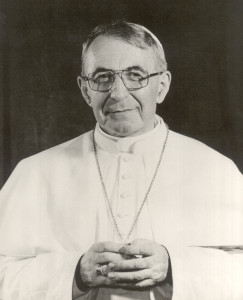 to the conclave. Afterwards, he was relieved that Pope John Paul I was elected as Pope on Aug. 26, 1978. He thought this confirmed that Padre Pio was wrong. However, after 33 days, having only recently returned to Krakow, he heard that Pope John Paul I died. As he returned to Rome, he realized that Padre Pio would be proven correct. For 8 votes, the Cardinals were split between two powerful Italian Cardinals. However, on the 9th vote, it w
to the conclave. Afterwards, he was relieved that Pope John Paul I was elected as Pope on Aug. 26, 1978. He thought this confirmed that Padre Pio was wrong. However, after 33 days, having only recently returned to Krakow, he heard that Pope John Paul I died. As he returned to Rome, he realized that Padre Pio would be proven correct. For 8 votes, the Cardinals were split between two powerful Italian Cardinals. However, on the 9th vote, it w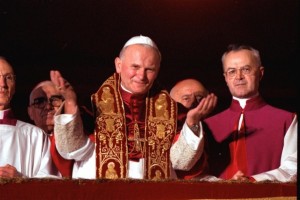 as as if “Wojtyla” was the only name that anyone could use; as if God said: “Enough fooling around, “Wojtyla is My Choice!!”. The Cardinals elected him Pope on October 16, 1978; the first non-Italian Pope in 450 years. He chose the name: John Paul II. He was the 263rd successor of St. Peter. He was the third longest reigning Pope, lasting nearly 27 years. He is among 4 Popes with the acclamation “Great”, along with Pope St. Leo I (reigned 440–61), Pope St. Gregory I (590–604), and Pope St. Nicholas I (858–67).
as as if “Wojtyla” was the only name that anyone could use; as if God said: “Enough fooling around, “Wojtyla is My Choice!!”. The Cardinals elected him Pope on October 16, 1978; the first non-Italian Pope in 450 years. He chose the name: John Paul II. He was the 263rd successor of St. Peter. He was the third longest reigning Pope, lasting nearly 27 years. He is among 4 Popes with the acclamation “Great”, along with Pope St. Leo I (reigned 440–61), Pope St. Gregory I (590–604), and Pope St. Nicholas I (858–67).
Having completed the “Theology of the Body”, his first task as Pope was to send it to Krakow; unfortunately, under Communist rule, without him as Cardinal of Krakow, it languished. As Pope, John Paul II discovered that there was an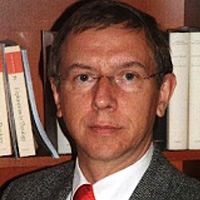 unwritten rule that Popes ‘do not publish’. At first he tried to comply by compressing the entire “Theology of the Body” opus into the Wednesday Audiences. He contacted the Polish Sisters at Dom Polski and directed them to portion it into 133 talks, translated into Italian. This is the original manuscript was discovered by Dr. Michael Waldstein, not only correcting many poor
unwritten rule that Popes ‘do not publish’. At first he tried to comply by compressing the entire “Theology of the Body” opus into the Wednesday Audiences. He contacted the Polish Sisters at Dom Polski and directed them to portion it into 133 talks, translated into Italian. This is the original manuscript was discovered by Dr. Michael Waldstein, not only correcting many poor 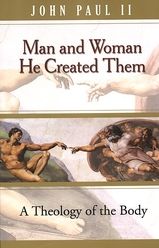 translations but discovering undelivered original text. Later, in his Pontificate, he considered this unwritten rule dispensable and published: Threshold of Hope. Later, the well published Cardinal Joseph Ratzinger, who became Pope Benedict, likewise broke this unwritten code. In the midst of delivering the 133 Wednesday Audiences over 5 years, Pope John Paul II summed up his teaching in his first Encyclical “Redemptoris Hominis” #25: “Man cannot live without love. He remains a being that is incomprehensible for himself, his life is senseless, if love is not revealed to him, if he does not encounter love, if he does not experience it and make it his own, if he does not participate intimately in it”.
translations but discovering undelivered original text. Later, in his Pontificate, he considered this unwritten rule dispensable and published: Threshold of Hope. Later, the well published Cardinal Joseph Ratzinger, who became Pope Benedict, likewise broke this unwritten code. In the midst of delivering the 133 Wednesday Audiences over 5 years, Pope John Paul II summed up his teaching in his first Encyclical “Redemptoris Hominis” #25: “Man cannot live without love. He remains a being that is incomprehensible for himself, his life is senseless, if love is not revealed to him, if he does not encounter love, if he does not experience it and make it his own, if he does not participate intimately in it”.

